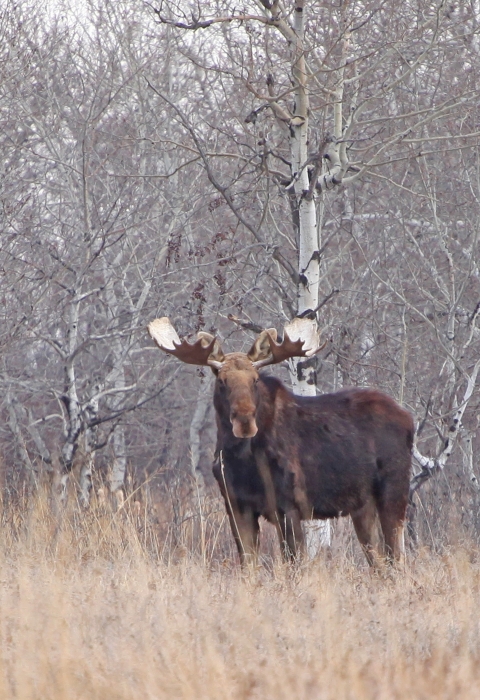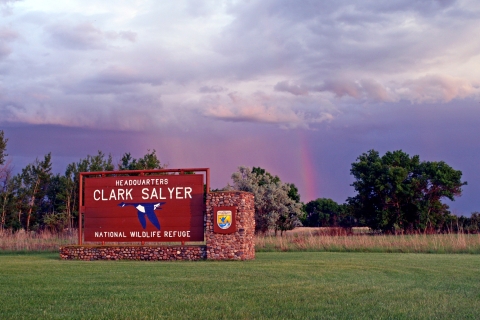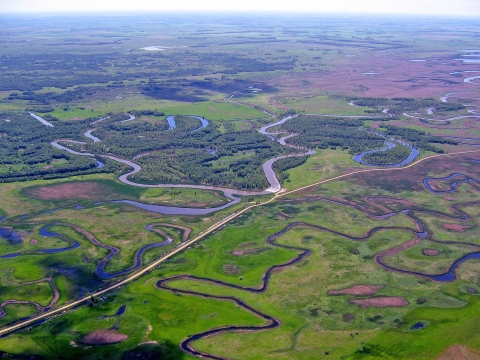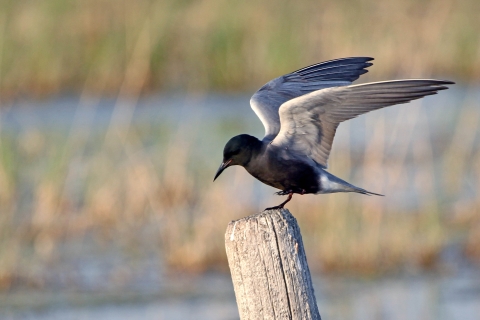The primary purpose of the Refuge is to provide habitat for waterfowl, migratory birds, and other wildlife. The Refuge is one of over 565 refuges and 38 wetland management districts in the National Wildlife Refuge System - a network of lands set aside and managed by the U.S. Fish and Wildlife Service specifically for wildlife.
Visit Us
Welcome
J. Clark Salyer National Wildlife Refuge offers a variety of opportunities for people to enjoy wildlife observation, hiking, canoeing, photography, hunting, and fishing.
Plan your Trip
Visit our website to help plan your trip or visit us at the J. Clark Salyer National Wildlife Refuge Administration Building and Visitor Contact Station 2 miles north of Upham, ND off of Highway 14.
Location and Contact Information
About Us
J. Clark Salyer National Wildlife Refuge was established in 1935. The Refuge lies in the lake bed of glacial Lake Souris, once home to the Arikara, Assiniboine, Cheyenne, Hidatsa, Lakota, and Mandan Tribes of American Indians. Retreating glaciers created the rolling hills and temporary wetlands of today's landscape. Most of the Refuge is composed of river valley wetland habitat that is bordered by a narrow strip of upland vegetation. The southern portion of the Refuge includes wooded river bottoms, floodplain meadows, and native prairie sandhills. The sandhills are remnants of wind-and-wave borne deposits on the ancient lakeshore. All of the land cover types found here- mixed grass prairie, river valley, marshes, sandhills, and woodlands- come together to support an abundant variety of wildlife.
The primary purpose of the Refuge is to provide habitat for waterfowl, migratory birds, and other wildlife. The Refuge is one of over 565 refuges and 38 wetland management districts in the National Wildlife Refuge System - a network of lands set aside and managed by the U.S. Fish and Wildlife Service specifically for wildlife.
What We Do
Wildlife conservation is at the heart of the National Wildlife Refuge System. It drives everything on U.S. Fish and Wildlife Service lands and waters managed within the Refuge System, from the purposes for which a national wildlife refuge national wildlife refuge
A national wildlife refuge is typically a contiguous area of land and water managed by the U.S. Fish and Wildlife Service for the conservation and, where appropriate, restoration of fish, wildlife and plant resources and their habitats for the benefit of present and future generations of Americans.
Learn more about national wildlife refuge is established to the recreational activities offered to the resource management tools used. Using conservation best practices, the Refuge System manages Service lands and waters to help ensure the survival of native wildlife species.
To provide the widest variety of quality wetland habitat for hundreds of thousands of migratory birds, Refuge staff manage water levels to maintain everything from wet soils to deep water conditions. This encourages growth of nutritious plants and other organisms and helps prevent cattails from over-growing the marshes. Historically, the natural combination of wildfire and bison grazing maintained the grasslands in this area. Today, Refuge staff use a combination of haying, grazing, mowing, prescribed burning, spraying, and biological agents to control noxious weeds and prevent the invasion of grasslands by shrubs.
Our Species
J. Clark Salyer National Wildlife Refuge provides important habitat for thousands of migratory birds. Over 250 bird species are found here, including waterfowl, shorebirds, raptors, and songbirds. Many mammals live on the Refuge as well.



